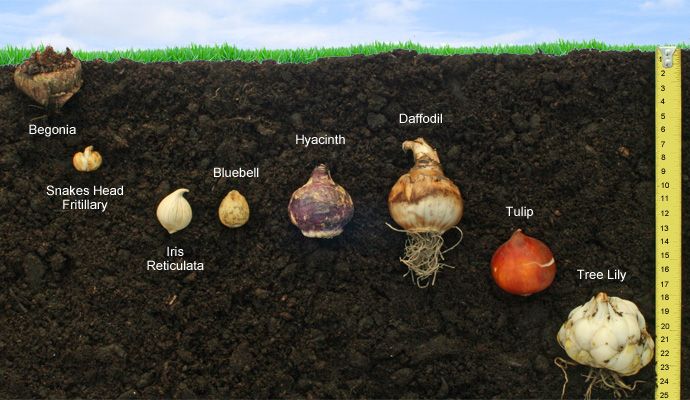Planting Bulbs for Spring

If you read our article about planting up containers for spring, you may have wondered about planting bulbs in the garden. And yes, indeed, now is the time to be ordering bulbs, ready for planting any time from now until about mid-October or early November.
So what should you think about when ordering and planting bulbs? First of all, consider what effects you want to create. One of the recurring themes in my garden is colour all year round. So I try to have bulbs that will give me a continuous stream of colour from about January onwards. By planting snowdrops, aconites, crocus, dwarf iris, rockery narcissi, ordinary daffodils and narcissi, and tulip species, you can get colour and interest from bulbs from January through to May. And by May, the other plants in your garden will be waking up, so the dying leaves of the bulbs will be hidden from view by new growth.
Getting an effect like this requires you to put in bulbs around existing plants, so it’s best to do it earlier, rather than later. If you wait until all the perennials have died back, you won’t remember where they are, and the chances are that you will end up digging several up and having to replant. However, that’s not necessarily a bad thing, as you can then put the bulbs under the plant, saving space. The only problem is digging up the bulbs you have previously planted, but hey, you can always replant them! You might also consider growing bulbs in a lawn, which can be especially attractive if you have a wildflower meadow, and want some interest early in the year.
Generally, you want to plant bulbs about one and half times or twice their depth. However, you don’t have to measure too accurately, provided that they’re fully covered. You should plant them with the point upwards, but anyone who has ever gardened with children will know that in practice, they’ll probably grow anyway. If you can be bothered, buy compost (click here) and put some in at the bottom of the holes, as that will give your bulbs an extra boost, but it’s not essential. John Innes compost is the best varety to use, and John Innes compost number 1 is desgned to help young plants thrive in their envirnonment. If you're choosing compost, then John Innes is definitely the way to go.
If you already have enough bulbs in your flower beds, how about growing bulbs for cut flowers? If you have space, perhaps at an allotment, you could grow daffodils or narcissi there, and give yourself a supply of cut flowers for spring. To make sure the flowers are strong and well-grown enough for cutting, add good quality compost, such as mushroom compost, to the base of the holes before you plant the bulbs.
Bulb growing really is an area where prior preparation ensures success, so go ahead, order and plant now for spring colour.